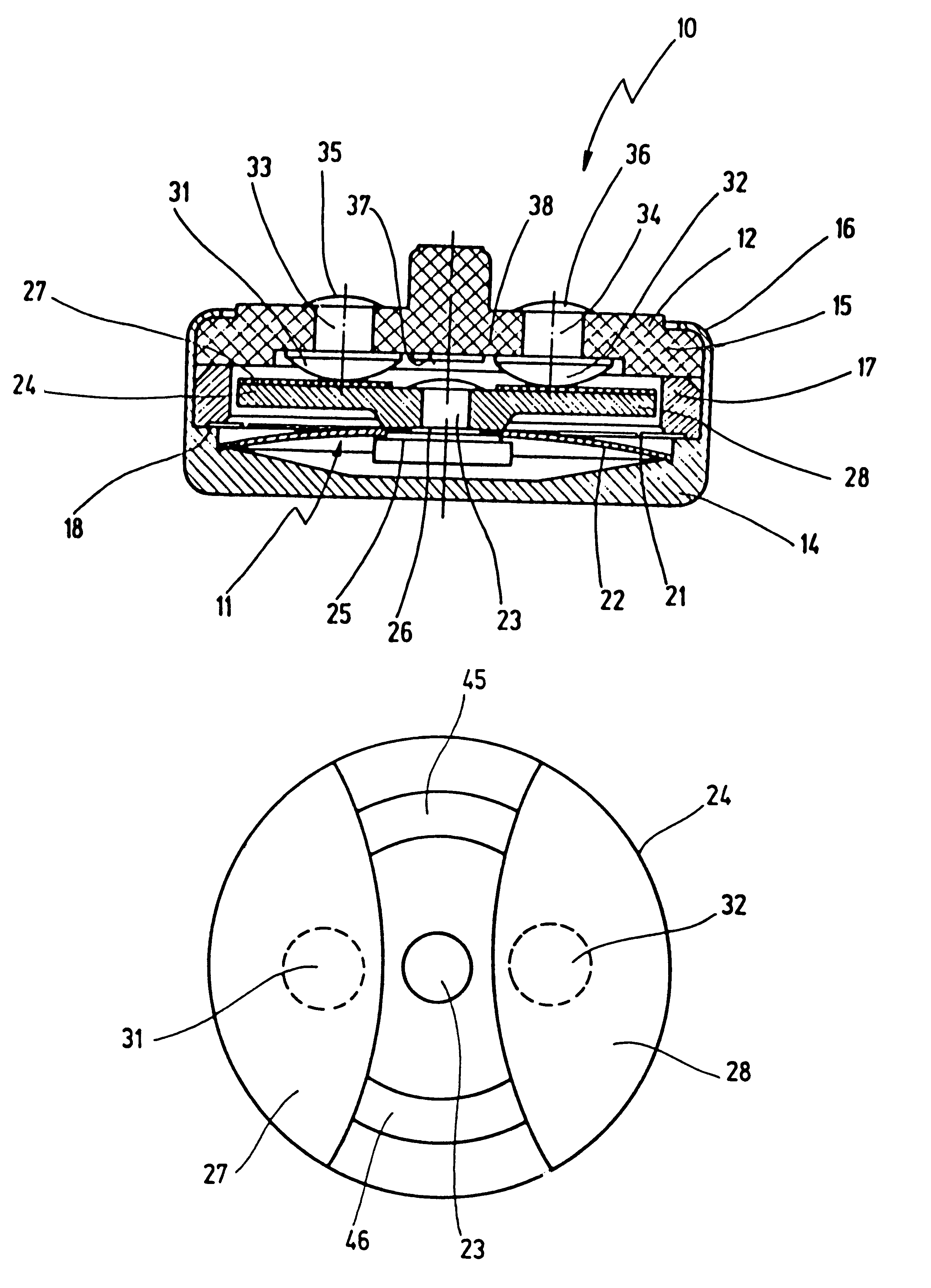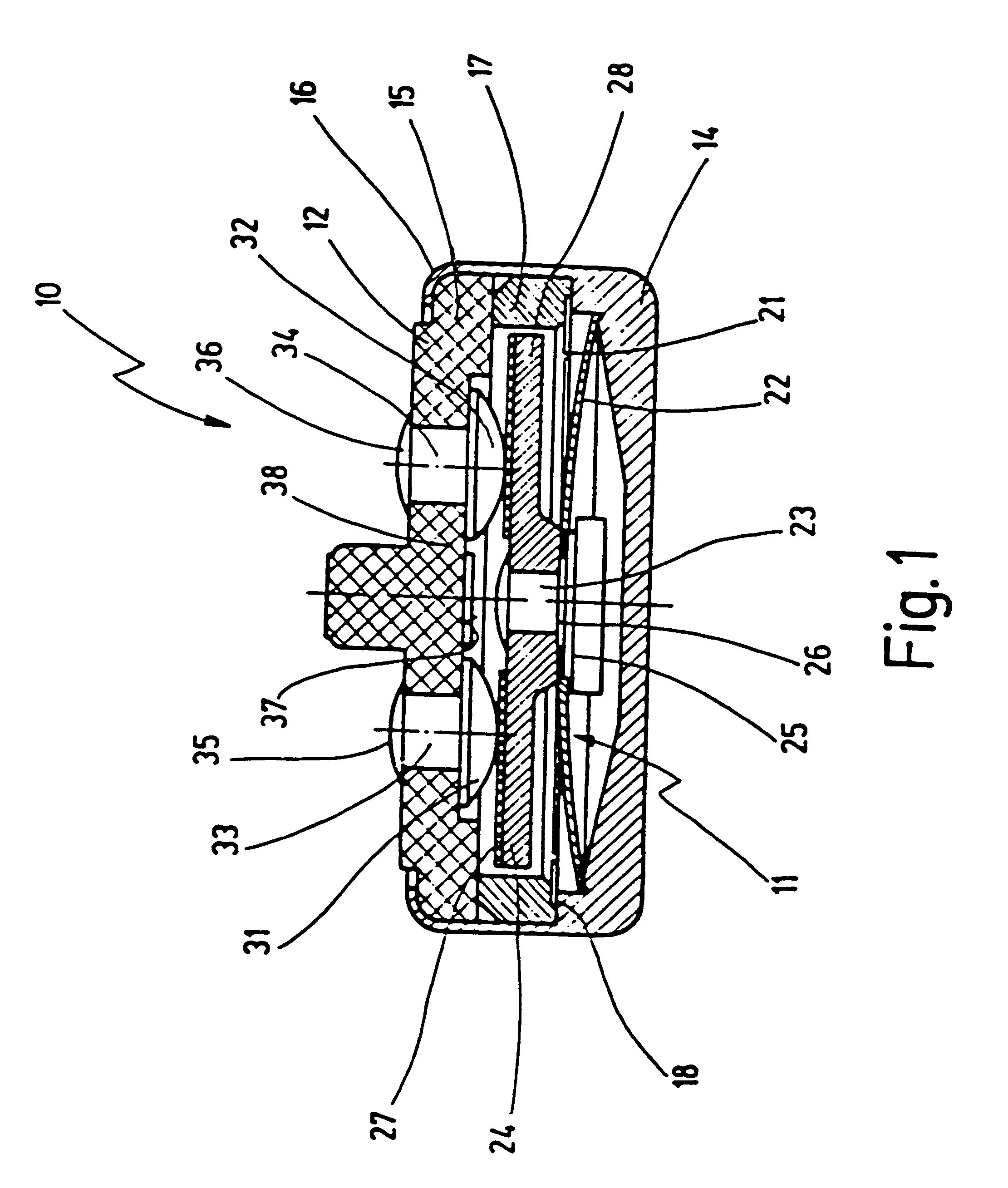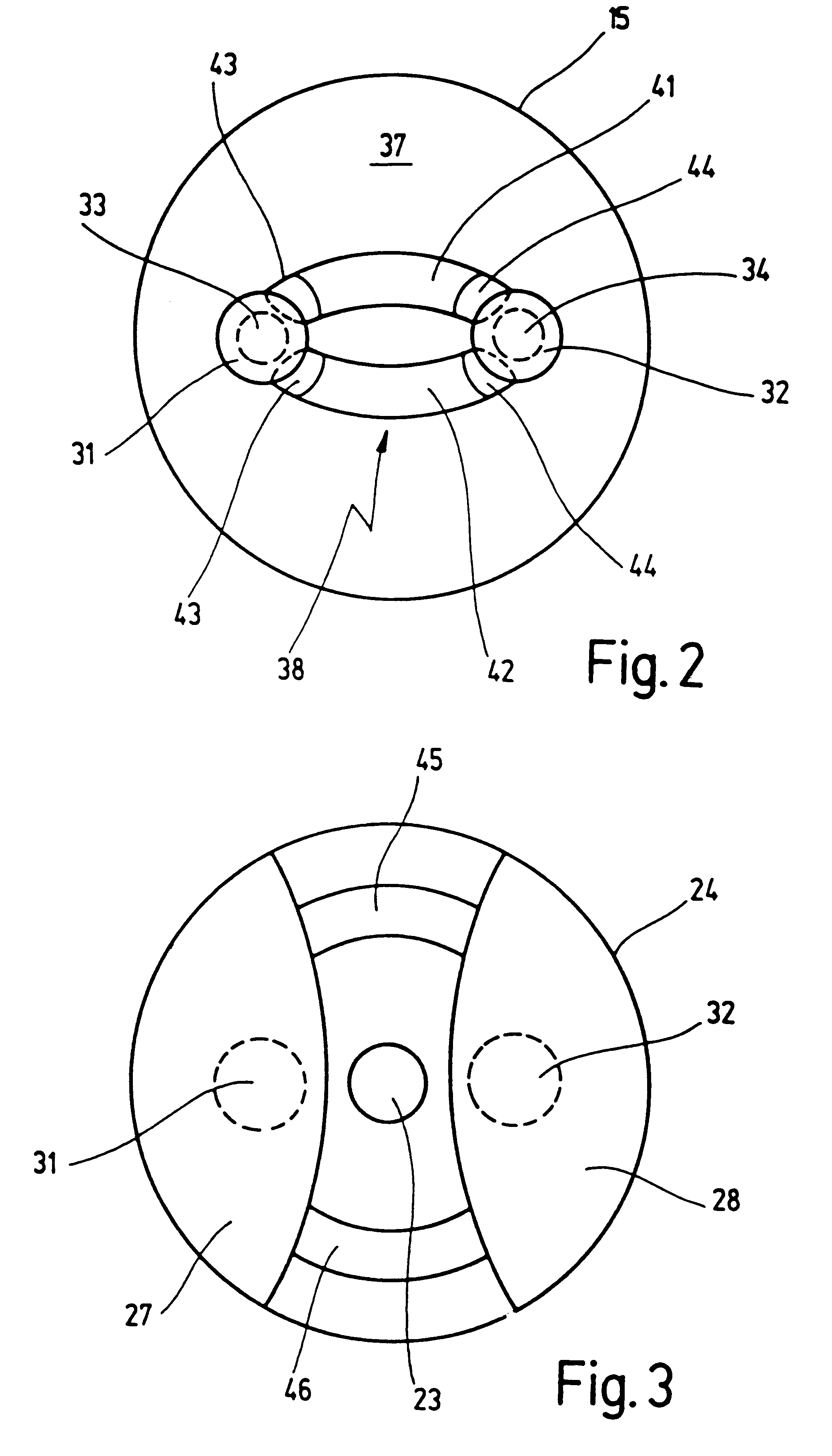Temperature-dependent switch having a current transfer member
- Summary
- Abstract
- Description
- Claims
- Application Information
AI Technical Summary
Benefits of technology
Problems solved by technology
Method used
Image
Examples
Embodiment Construction
In FIG. 1, 10 designates a temperature-dependent switch which comprises a temperature-dependent switching mechanism 11 that is housed in a housing 12.
Housing 12 comprises a lower part 14 and an upper part 15, closing off said lower part, which upper part is held on the latter by a flanged-over rim 16 of lower part 14. Arranged between lower part 14 and upper part 15 is a ring 17 which is braced on a step 18 of lower part 14 and there guides a spring disk 21 of switching mechanism 11 at its rim.
Switching mechanism 11 also comprises, in addition to spring disk 21, a bimetallic snap disk 22 which, together with spring disk 21, is penetrated centrally by a stem-like rivet 23 by way of which they are mechanically joined to a current transfer member in the form of a contact plate 24. Rivet 23 has a first step 25 on which the bimetallic snap disk sits with radial and axial clearance, a second step 26 being provided on which spring disk 21 sits, also with radial and axial clearance.
The afor...
PUM
 Login to View More
Login to View More Abstract
Description
Claims
Application Information
 Login to View More
Login to View More - R&D
- Intellectual Property
- Life Sciences
- Materials
- Tech Scout
- Unparalleled Data Quality
- Higher Quality Content
- 60% Fewer Hallucinations
Browse by: Latest US Patents, China's latest patents, Technical Efficacy Thesaurus, Application Domain, Technology Topic, Popular Technical Reports.
© 2025 PatSnap. All rights reserved.Legal|Privacy policy|Modern Slavery Act Transparency Statement|Sitemap|About US| Contact US: help@patsnap.com



